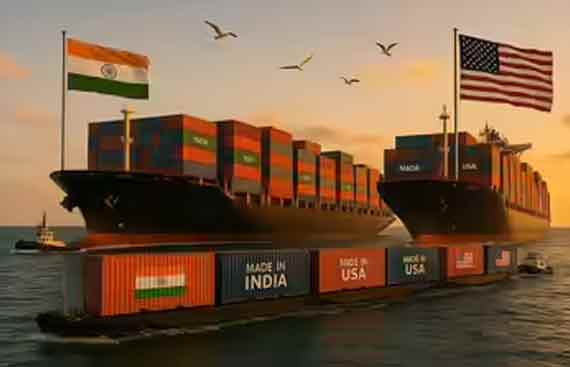India-US Push for Breakthrough Trade Deal Ahead of Tariff Deadline

A delegation of Indian officials has arrived in Washington to advance negotiations on the initial tranche of the Bilateral Trade Agreement (BTA). Although the primary focus of the talks will be the BTA, any progress achieved before the August 1 deadline for implementing reciprocal tariffs will be structured as an interim agreement, according to officials. They clarified that no distinction is being made between an interim agreement and the first phase of the bilateral trade agreement. Negotiations will continue on the first tranche of the BTA following the initial deal.
The U.S. has communicated new tariff measures to 24 countries and the European Union (EU), with rates reaching as high as 50 percent on imports from Brazil. A deal has reportedly been finalized with both the United Kingdom and Vietnam. However, there remains some ambiguity in the arrangements with Vietnam, as President Trump has indicated that a 20 percent duty will be applied to Vietnamese imports. In contrast, officials in Hanoi contend that they had initially agreed to a lower duty of just 11 percent.
The recent visit follows closely on the heels of a similar trip to the United States by the Indian negotiating team, which was initially scheduled for two days in Washington but extended to seven days from June 26 to July 2. During this period, the two nations have maintained regular communication, both in person and via virtual means.
The primary point of contention in these negotiations has been the United States' demand for the liberalization of agricultural imports. The U.S. is vigorously advocating for increased access to India's agrarian market for American farmers, including calls for duty reductions and approval for the sale of genetically modified products. The U.S. is also pushing for lower tariffs on automobiles and increased procurement of energy products from the U.S. Meanwhile, India is striving to safeguard its farmers' interests, particularly in the dairy sector and staple commodities such as wheat and rice, while also seeking greater market access for its labor-intensive and emerging manufacturing sectors, including electronics.
In addition to advancing goods trade, a key objective for the U.S. in these negotiations is to foster a more liberal regulatory environment for its technology companies operating in India. The partnership between India and the U.S. extends beyond mere trade, with both nations committed to nurturing their relationship. The U.S. remains India's largest export market and is the only major economy with which India maintains a trade surplus.
